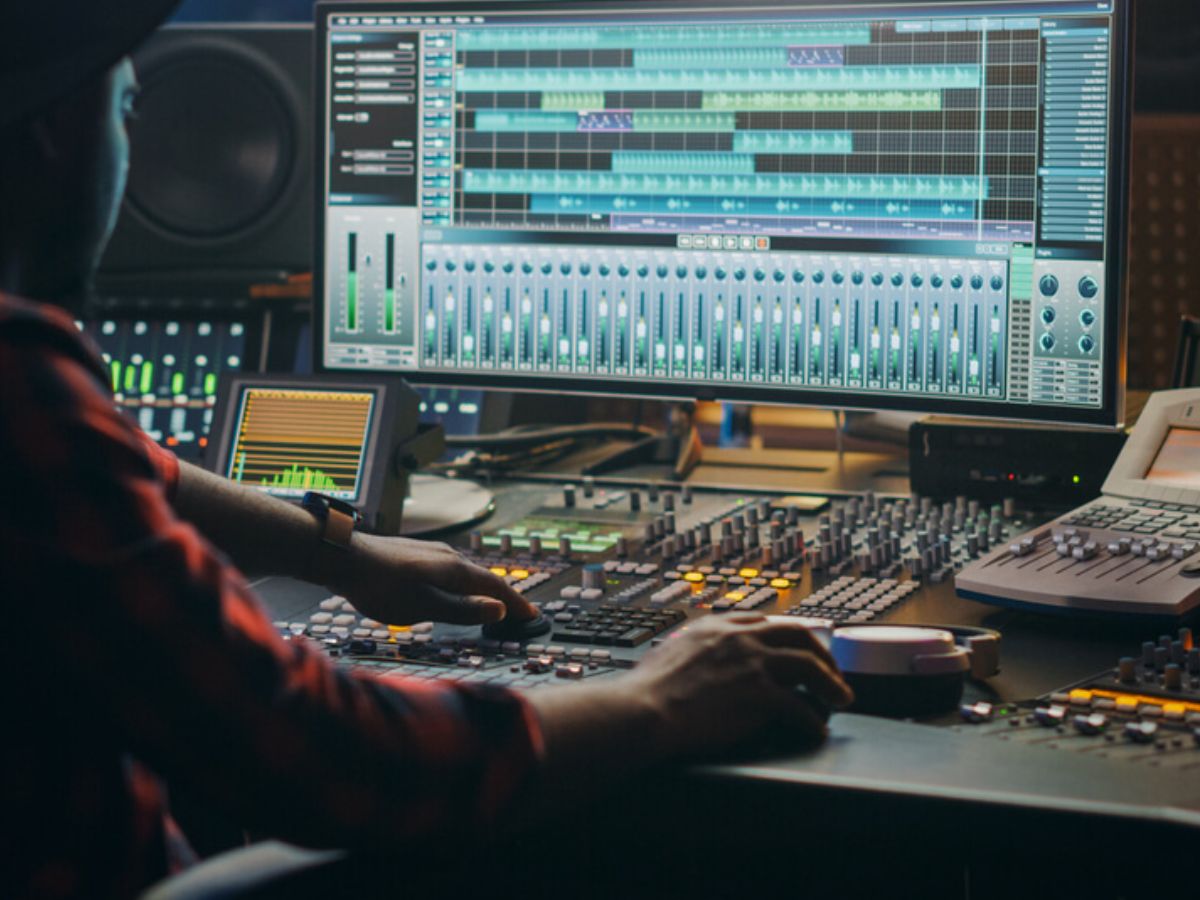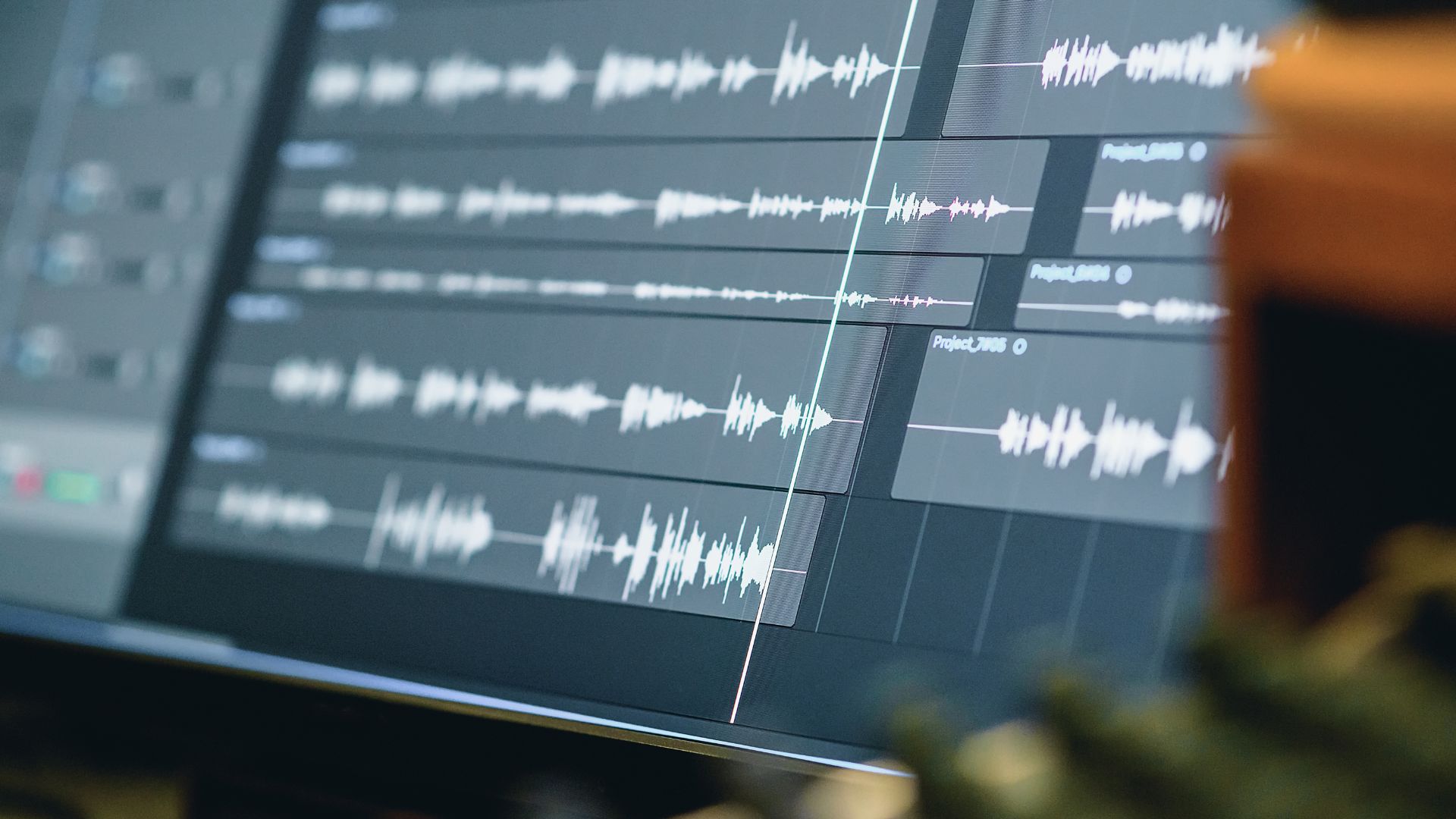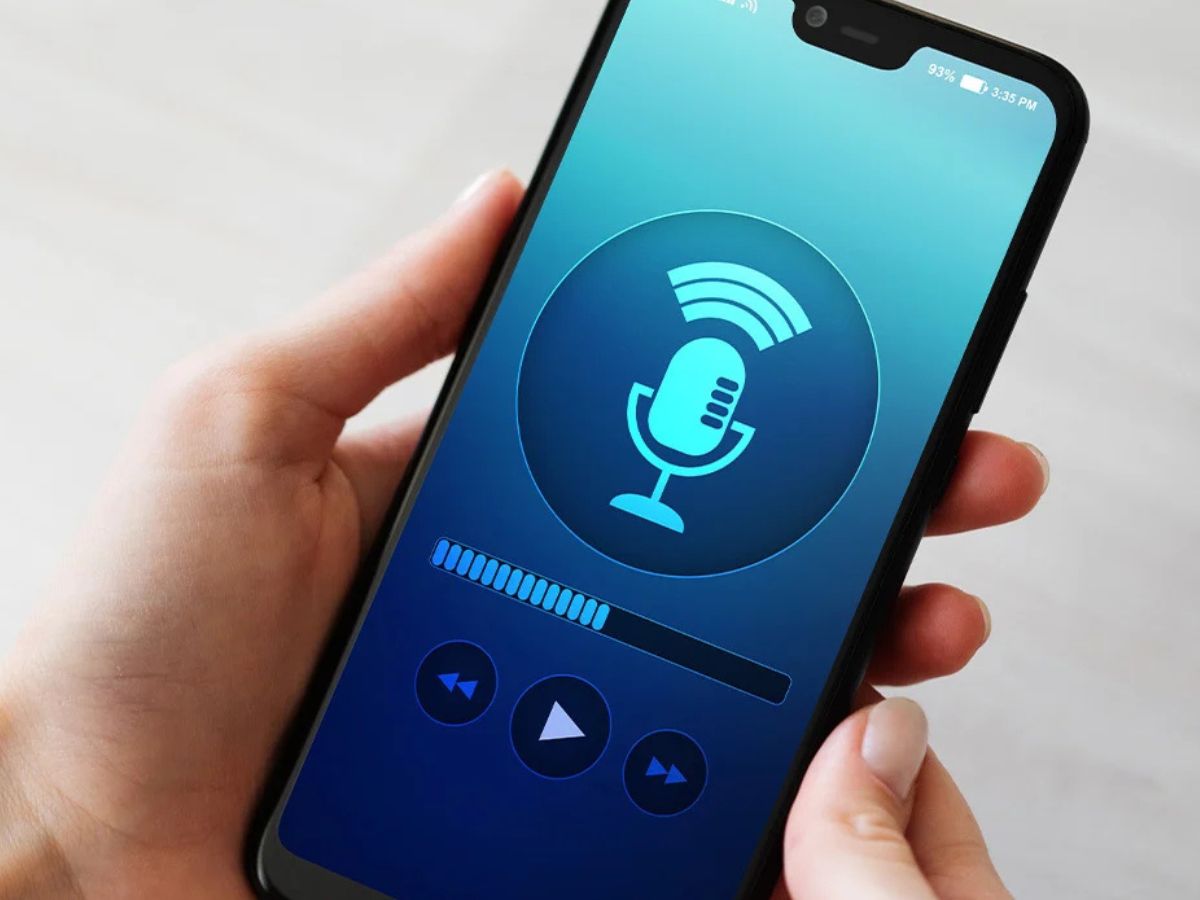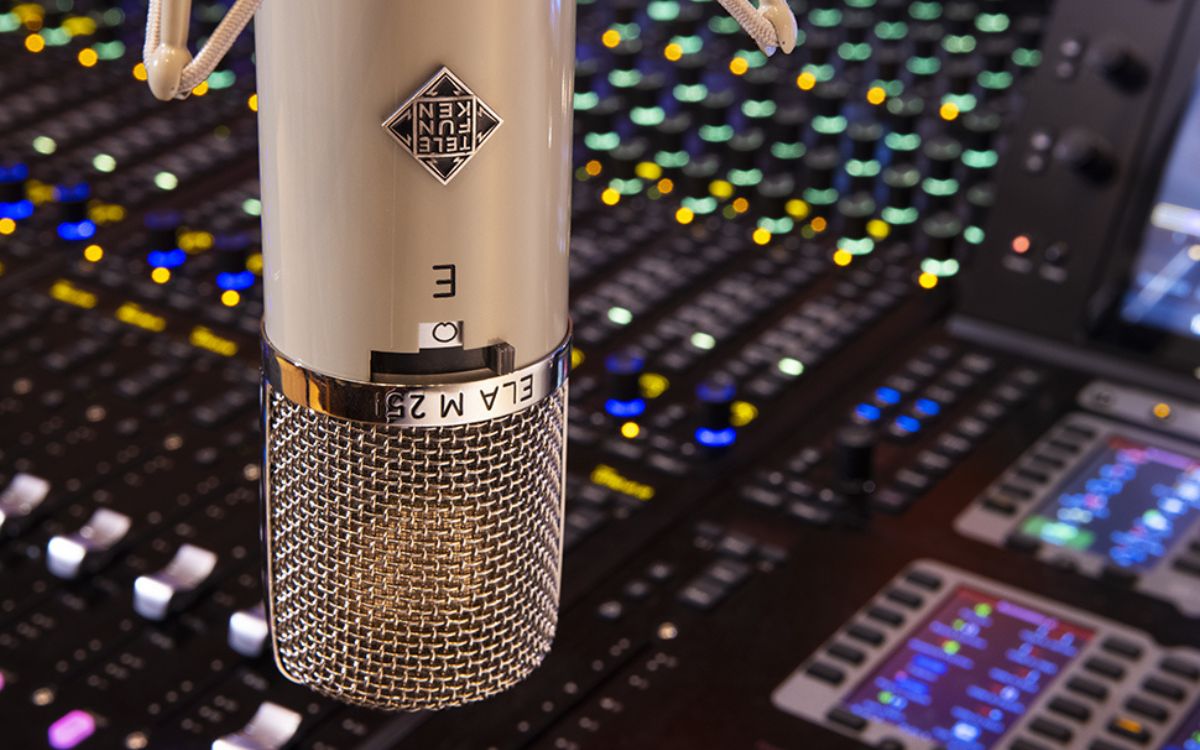Home>Production & Technology>Sound Effects>How To Keep Sound Effects In A Dub
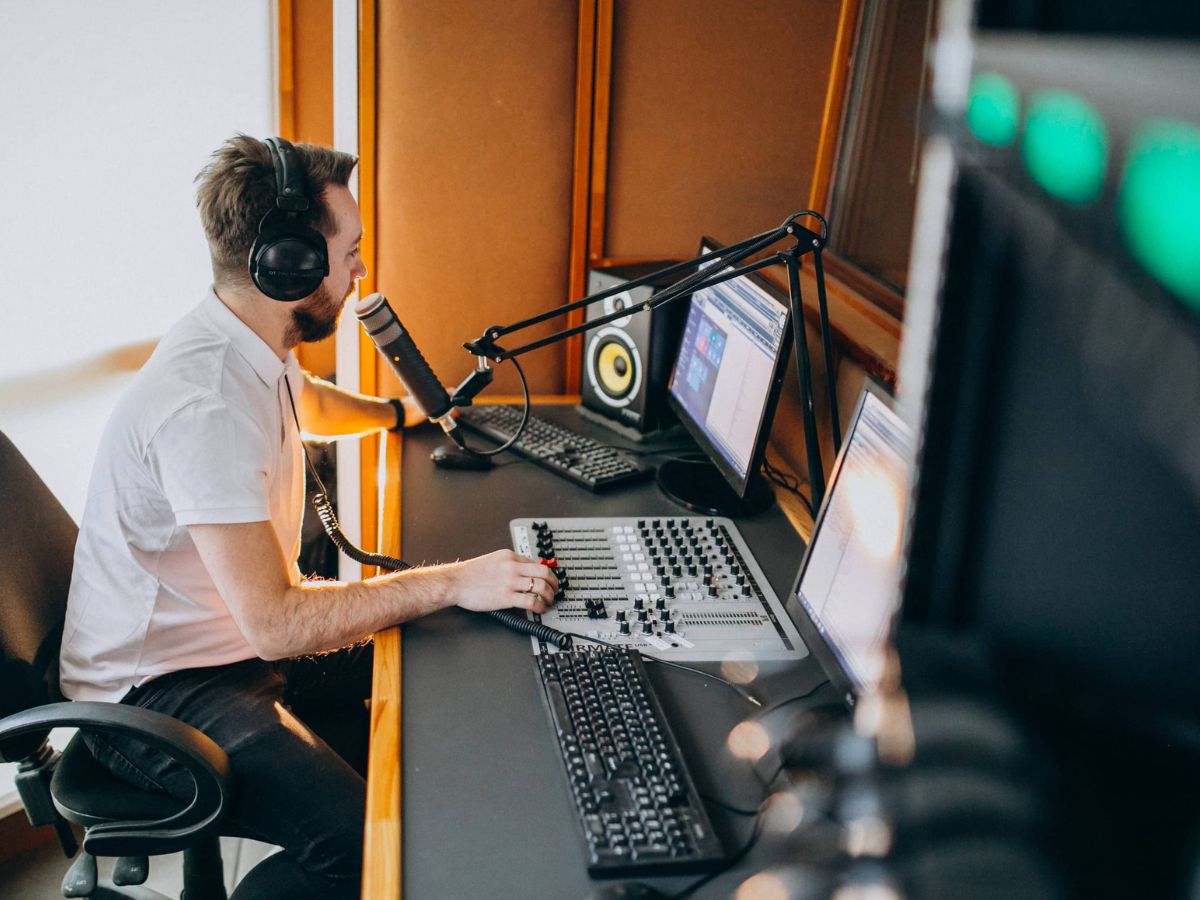

Sound Effects
How To Keep Sound Effects In A Dub
Published: November 9, 2023
Learn the best techniques to keep sound effects intact in a dub, ensuring an immersive audio experience. Discover expert tips and tricks for preserving the essence of sound effects.
(Many of the links in this article redirect to a specific reviewed product. Your purchase of these products through affiliate links helps to generate commission for AudioLover.com, at no extra cost. Learn more)
Table of Contents
- Introduction
- Importance of Sound Effects in a Dub
- Challenges in Maintaining Sound Effects in a Dub
- Tips for Preserving Sound Effects in a Dub
- Choosing the Right Dubbing Studio
- Collaborating with Sound Designers
- Proper Equipment and Technology
- Paying Attention to Detail
- Quality Control and Feedback
- Conclusion
Introduction
Welcome to the world of sound effects in dubbing! In the realm of film, television, and other multimedia projects, sound effects are crucial for enhancing the overall experience. They add depth, realism, and emotion to the visual content, making it more engaging and immersive for the audience. Whether it’s the sound of footsteps on a deserted road, a roaring explosion, or the gentle rustle of leaves in a forest, sound effects play a vital role in bringing scenes to life.
However, keeping sound effects intact during the dubbing process can be quite challenging. Dubbing, the process of replacing the original dialogue of a film or video with a translated version in a different language, requires careful attention to detail to ensure that the sound effects seamlessly integrate with the new dialogue. It is a delicate balancing act between preserving the authenticity and emotion of the original and adapting it to fit the cultural nuances of the target audience.
In this article, we will explore the importance of sound effects in a dub and discuss the challenges faced in maintaining them. We will also provide a list of valuable tips to help preserve sound effects effectively during the dubbing process. So, whether you are a filmmaker, a sound designer, or simply someone interested in the behind-the-scenes magic of creating captivating audiovisual experiences, this article will provide you with valuable insights into the world of sound effects in dubbing.
Importance of Sound Effects in a Dub
Sound effects are an integral part of any audiovisual production, and their significance becomes even more prominent in the context of dubbing. When a film or video is dubbed into a different language, it is essential to maintain the impact and emotional resonance of the original audio while adapting it to the target language and culture. Sound effects play a key role in achieving this delicate balance. Here are some reasons why sound effects are crucial in a dub:
- Enhancing Realism: Sound effects help create a sense of realism and immersion in a dub. They add depth and texture to the visuals, making the scenes more believable and captivating for the audience. From ambient noise to specific sound cues, sound effects bring the environment to life and make the viewer feel like they are experiencing the story firsthand.
- Conveying Emotions: Sound effects are powerful tools for conveying emotions in a dub. They can heighten suspense, evoke fear, elicit laughter, or evoke any desired emotion. From the sound of a breaking heart to the subtle nuances in the voice of a character, sound effects amplify the impact of the dialogue, intensifying the emotional engagement of the viewer.
- Clarifying Context: In a dub, sound effects serve as cues to provide context and help the audience understand the story. They can indicate the location, time period, or even the actions taking place off-screen. For example, the sound of a door opening and closing can signify someone entering or leaving a room, adding clarity to the scene for viewers who may not understand the language being spoken.
- Seamless Integration: Sound effects ensure a seamless integration of the dubbed dialogue with the original audio. They help mask any discrepancies or mismatches that may occur during the dubbing process, creating a cohesive and unified sound experience. When properly synchronized, sound effects can make the viewer forget that they are listening to a dubbed version and maintain the illusion of a natural and fluid audiovisual presentation.
In summary, sound effects are essential in a dub as they enhance realism, convey emotions, clarify context, and facilitate seamless integration. They are the invisible storytellers that work alongside dialogue and visuals to create a fully immersive audiovisual experience.
Challenges in Maintaining Sound Effects in a Dub
While sound effects are crucial in a dub, preserving them presents its own set of challenges. The dubbing process involves replacing the original dialogue with a translated version, often in a different language, while ensuring that the sound effects remain consistent and coherent. Here are some of the challenges faced in maintaining sound effects during dubbing:
- Language and Cultural Adaptation: One of the primary challenges in dubbing is adapting the sound effects to the target language and culture. Certain sounds may have different connotations or meanings in different cultures, and finding the equivalent sound or effect that resonates with the target audience can be a complex task.
- Lip-Sync and Timing: Maintaining synchronization between the dubbed dialogue, sound effects, and the original visuals is crucial. Lip-sync accuracy is important for creating a natural and seamless experience for the viewers. Achieving perfect timing between the sound effects and the on-screen actions can be challenging during the dubbing process.
- Preserving Original Emotion: Sound effects often carry emotional cues in the original version, and it is essential to preserve those emotions during the dub. The challenge lies in finding sound effects that evoke the same emotional response in the target audience, as cultural sensitivities and preferences may differ.
- Consistency Across Dubbing Sessions: Ensuring consistency in sound effects throughout the dubbing process is vital. Different dubbing sessions, sound engineers, or even different parts of a project may introduce variations in sound effects, which can disrupt the overall coherence of the production. Maintaining a consistent sound palette is essential for a seamless dubbing experience.
- Technical Limitations: Technical limitations can pose challenges in maintaining sound effects during dubbing. Sometimes, the quality of the original sound effects may not match the desired level of the dub, requiring additional audio processing and editing. Finding the right balance between the original sounds, the dubbed dialogue, and any added effects can be technically demanding.
Despite these challenges, with careful planning, collaboration, and attention to detail, it is possible to overcome these obstacles and preserve the essence and impact of sound effects in a dub. The next section will provide valuable tips to help you effectively maintain sound effects during the dubbing process.
Tips for Preserving Sound Effects in a Dub
Preserving sound effects in a dub requires careful consideration and attention to detail. Here are some valuable tips to help you maintain the integrity and impact of sound effects during the dubbing process:
- Choosing the Right Dubbing Studio: Selecting a reliable and experienced dubbing studio is crucial. Look for a studio that has a strong track record in preserving sound effects and delivering high-quality dubbing. They should have skilled sound engineers and access to a comprehensive library of sound effects to ensure a seamless integration with the dubbed dialogue.
- Collaborating with Sound Designers: Involve sound designers from the early stages of the dubbing process. Their expertise can help in selecting appropriate sound effects that match the emotions, context, and cultural nuances of the targeted audience. Collaborating closely with them ensures a cohesive audiovisual experience.
- Utilizing Proper Equipment and Technology: Use high-quality recording equipment and advanced technology to capture and reproduce sound effects accurately. This includes microphones, audio interfaces, and software tools that enable precise editing, mixing, and synchronization of sound effects with the dubbed dialogue.
- Paying Attention to Detail: Focus on the small details that contribute to the authenticity of the sound effects. Pay attention to subtleties, such as environmental ambience, footsteps, or specific nuances in character sounds. These details can significantly enhance the overall quality and realism of the dub.
- Implementing a Quality Control Process: Establish a rigorous quality control process to ensure consistency and accuracy in sound effects. Regularly review and compare the sound effects in the original and dubbed versions to identify any discrepancies or inconsistencies. Provide feedback to the sound engineers and make necessary adjustments to maintain a cohesive sound experience.
By following these tips, you can effectively preserve sound effects in a dub and ensure that they seamlessly blend with the dubbed dialogue, maintaining the impact and emotional resonance of the original audio. Remember, maintaining sound effects during the dubbing process requires thoughtful planning, collaboration, and attention to detail, but the end result is a captivating and immersive audiovisual experience for the audience.
Choosing the Right Dubbing Studio
When it comes to preserving sound effects in a dub, one of the most critical factors is selecting the right dubbing studio. A reputable studio with experience in sound effects preservation can make all the difference in delivering a high-quality dubbing experience. Here are some key considerations to keep in mind when choosing a dubbing studio:
- Expertise in Sound Effects: Look for a dubbing studio that has a strong track record in preserving sound effects. They should have a team of skilled sound engineers who understand the intricacies of sound design and can effectively integrate the sound effects with the dubbed dialogue. Check their portfolio or ask for examples to assess their proficiency in this aspect.
- Access to a Comprehensive Sound Library: A good dubbing studio should have access to a vast library of sound effects. This ensures that they can choose the most appropriate sound effects to match the original audio, context, and cultural aspects of the target audience. The availability of a diverse range of sound effects allows for more creativity and flexibility in the dubbing process.
- Experience with International Projects: If you are working on a project with multiple languages or cultural adaptations, it is important to choose a dubbing studio that has experience with international projects. They should have expertise in adapting sound effects to different languages and cultural contexts, ensuring that the final product resonates seamlessly with the target audience.
- Collaborative Approach: Seek a dubbing studio that values collaboration and open communication. They should be willing to work closely with you and your sound designers to understand your vision for the sound effects and incorporate your feedback. A collaborative approach ensures that the final dub reflects your creative intentions while maintaining the highest audio quality.
- Quality Control Measures: Assess the quality control measures implemented by the dubbing studio. They should have a rigorous process in place to review and verify the sound effects throughout the dubbing process. This includes regularly comparing the sound effects in the original and dubbed versions, addressing any discrepancies, and making necessary adjustments for consistency.
Choosing the right dubbing studio sets the foundation for preserving sound effects effectively in a dub. Take the time to research and evaluate different studios, review their past work, and communicate your specific requirements and expectations. By selecting a studio with the right expertise and resources, you can ensure that your sound effects are accurately preserved and seamlessly integrated into the final dubbing product.
Collaborating with Sound Designers
Collaborating with sound designers is a crucial aspect of preserving sound effects in a dub. Sound designers bring their creative expertise and technical knowledge to the table, ensuring that the sound effects seamlessly integrate with the dubbed dialogue and enhance the overall audiovisual experience. Here are some key points to consider when collaborating with sound designers:
- Early Involvement: Involve sound designers from the early stages of the dubbing process. By including them in the planning and pre-production phase, they can better understand your vision for the sound effects and contribute their ideas to enhance the overall audio experience.
- Clear Communication: Clearly communicate your expectations and requirements to the sound designers. Discuss the emotional impact you want to achieve with the sound effects, the cultural nuances to consider, and any specific guidelines or preferences you may have. Effective communication ensures that the sound designers have a clear direction in creating and preserving the sound effects.
- Collaborative Creativity: Foster a collaborative environment where sound designers can share their creative ideas and expertise. They may suggest alternative sound effects or techniques that can enhance the impact or authenticity of the dub. By working together, you can find the perfect balance between preserving the original sound effects and adapting them to suit the target language and culture.
- Sharing Reference Material: Provide sound designers with reference material, such as the original audio, visuals, and any specific cues or instructions. This helps them understand the context of the scenes and ensures that the sound effects align with the on-screen actions and emotions portrayed by the actors.
- Feedback and Iteration: Regularly provide feedback on the implemented sound effects. Encourage an iterative process where sound designers can make adjustments based on your input. This allows for fine-tuning and ensures that the final sound effects align with your vision and expectations.
Collaborating with sound designers brings a wealth of knowledge and creativity to the dubbing process. By establishing a strong working relationship and maintaining open lines of communication, you can leverage their expertise to preserve sound effects effectively. Remember, their input and insights are valuable in creating a cohesive and immersive audio experience that perfectly complements the dubbed dialogue.
Proper Equipment and Technology
Having the right equipment and technology is crucial for preserving sound effects in a dub. From recording to editing and mixing, utilizing proper tools and technology ensures that the sound effects are accurately captured, processed, and integrated into the final product. Here are some key considerations for proper equipment and technology:
- High-Quality Microphones: Invest in high-quality microphones that capture sound with clarity and precision. Different types of microphones may be needed for specific sound effects, such as dynamic microphones for recording loud and impactful sounds, or condenser microphones for capturing subtle nuances. Choose microphones that best suit your project’s requirements for achieving accurate and rich recordings.
- Audio Interfaces: An audio interface is responsible for converting analog audio signals into digital format. Choose an audio interface that provides high-quality conversion and supports multiple inputs and outputs. This allows for seamless integration of multiple sound sources and facilitates efficient recording and monitoring during the dubbing process.
- Software Tools: Use professional audio editing and mixing software to process and manipulate sound effects. These tools provide a wide range of capabilities, including equalization, compression, reverb, and other necessary effects to achieve the desired result. Ensure that you are using the latest software versions to take advantage of new features and improvements.
- Sound Libraries: Access a comprehensive library of sound effects to ensure a wide selection of options for the dubbing process. Invest in reputable sound effect libraries or collaborate with sound designers who have access to extensive libraries. This allows for flexibility in choosing the most suitable sound effects that enhance the visual scenes while aligning with the dubbed dialogue.
- Monitoring Equipment: Having accurate monitoring equipment, such as high-quality speakers or headphones, is essential for assessing the quality and balance of the sound effects. It enables you to identify any flaws or discrepancies that may need adjustments during the dubbing process.
- Synchronization Tools: Use audio editing software that offers precise synchronization tools to ensure seamless integration of sound effects with the original visuals. Lip-sync accuracy is crucial in maintaining the natural flow of dialogue and sound effects. These tools help align the timing of the sound effects with the on-screen actions.
By investing in proper equipment and utilizing the latest technology, you can ensure the accurate capture, processing, and integration of sound effects in a dubbing project. The right tools enhance the creative process, allow for efficient collaboration, and help maintain the integrity and impact of the sound effects throughout the dubbing process.
Paying Attention to Detail
Preserving sound effects in a dub requires a keen eye for detail. It is essential to carefully consider every aspect of the sound effects to ensure they seamlessly integrate with the dubbed dialogue and enhance the overall audiovisual experience. Here are some key points to keep in mind when paying attention to detail:
- Environment and Ambience: Take into account the environment in which the scene takes place. Consider the acoustics, background noise, and overall ambience to create a realistic and immersive experience. Whether it’s the bustling streets of a city or the calm serenity of a rural countryside, matching the appropriate sound effects to the scene’s environment enhances its authenticity.
- Footsteps and Movements: Pay attention to the details of character movements and footsteps. Every step should match the on-screen action and reflect the character’s gait, footwear, and the surface they are walking on. Matching the sound effects accurately helps convey a sense of realism and immersion in the scene.
- Object Interactions: Consider the sounds produced when objects interact with each other. Whether it’s the clinking of glasses, the creaking of a door, or the rustling of papers, these small details can add depth and realism to the audio experience. Take the time to ensure that the sound effects align with the actions on-screen.
- Character Sounds: Each character may have distinct sounds associated with them. These can include breathing patterns, vocalizations, or specific effects related to certain actions or characteristics. Pay attention to these character-specific sounds to maintain consistency and authenticity in the dub.
- Scene Transitions: Smooth transitions between scenes are important to maintain continuity. Sound effects can help bridge the gap between different environments or situations. Pay attention to the sound effects used during scene transitions to ensure a seamless flow and enhance the overall coherence of the dub.
- Micro-Editing: Micro-editing techniques involve precisely timing and adjusting sound effects to match the visuals. This includes syncing up sound effects with on-screen actions, ensuring that the timing is accurate and precise. Paying attention to these micro-details can make a significant difference in the overall impact and coherence of the sound effects.
By paying attention to detail, you can enhance the authenticity and impact of the sound effects in a dub. Small nuances and subtle adjustments can create a more immersive and realistic audio experience, making the dubbing project truly memorable for the audience.
Quality Control and Feedback
Implementing a robust quality control process and actively seeking feedback are vital aspects of preserving sound effects in a dub. Through systematic evaluation and constructive feedback, you can ensure the consistency, accuracy, and overall quality of the sound effects. Here are some key points to consider for effective quality control and feedback:
- Comparison with the Original: Regularly compare the sound effects in the original and dubbed versions to identify any discrepancies or inconsistencies. This step helps ensure that the essence and impact of the original sound effects are preserved in the dubbing process. Pay attention to the details and nuances to maintain the integrity of the audio experience.
- Standards and Guidelines: Establish clear standards and guidelines for sound effects in the dubbing project. This provides a framework for evaluating the quality and coherence of the sound effects. Standards can include criteria such as realism, synchronization, and emotional impact. By adhering to these guidelines, you can ensure a consistent and high-quality audio experience.
- Feedback from Multiple Perspectives: Seek feedback from different stakeholders, including directors, producers, sound designers, and even focus groups if possible. Each perspective offers unique insights and helps identify areas for improvement. Encourage open and candid feedback to address any issues and refine the sound effects further.
- Continuous Iteration and Refinement: Viewing the dubbing process as an iterative one allows for continuous improvement. Incorporate feedback, make necessary adjustments, and refine the sound effects iteratively. This not only helps maintain quality but also allows for creative exploration and enhancement of the dubbing project.
- Collaboration with Sound Engineers: Sound engineers play a crucial role in the quality control process. Work closely with them to review the sound effects and ensure they meet the desired standards. Collaborate on identifying any improvements or adjustments that can enhance the overall sound experience.
- Monitoring Audience Response: Consider gathering feedback from the target audience to gauge their response to the sound effects. This can be done through test screenings or surveys to understand how well the sound effects resonate with them. Their insights can help refine the sound effects to better align with audience expectations.
By implementing a robust quality control process and actively seeking feedback, you can ensure that the sound effects in the dub are of the highest standard. Embrace a continuous improvement mindset and collaborate with all relevant stakeholders to achieve the best results. With diligent quality control and targeted feedback, you can preserve and enhance the impact of sound effects in the dub, providing an immersive and captivating audiovisual experience to the audience.
Conclusion
Preserving sound effects in a dub is a critical aspect of creating an immersive and engaging audiovisual experience. Sound effects enhance realism, convey emotions, provide context, and seamlessly integrate with the dubbed dialogue. However, it can be challenging to maintain sound effects during the dubbing process while adapting them to the target language and culture.
By choosing the right dubbing studio, collaborating with sound designers, utilizing proper equipment and technology, paying attention to detail, and implementing a quality control process, you can effectively preserve sound effects in a dub. The expertise of sound designers, careful selection of sound effects, and ensuring lip-sync accuracy are crucial in achieving a seamless integration of sound effects with visuals. Continuous iteration and refinement, along with feedback from multiple perspectives, help maintain the highest quality and coherence in the sound effects.
Sound effects, when preserved effectively, add depth, realism, and emotional impact to the dubbed project. They transport the audience into the world of the story, making them feel like they are part of the action. By investing time and effort in preserving sound effects, you can create an audio experience that captivates the viewers and enhances their overall enjoyment of the dub.
In conclusion, preserving sound effects in a dub is a meticulous process that requires collaboration, technical expertise, and a keen attention to detail. By following the tips and strategies outlined in this article, you can successfully preserve the authenticity and impact of sound effects in your dubbing projects, creating an immersive audiovisual experience that resonates with the audience.

